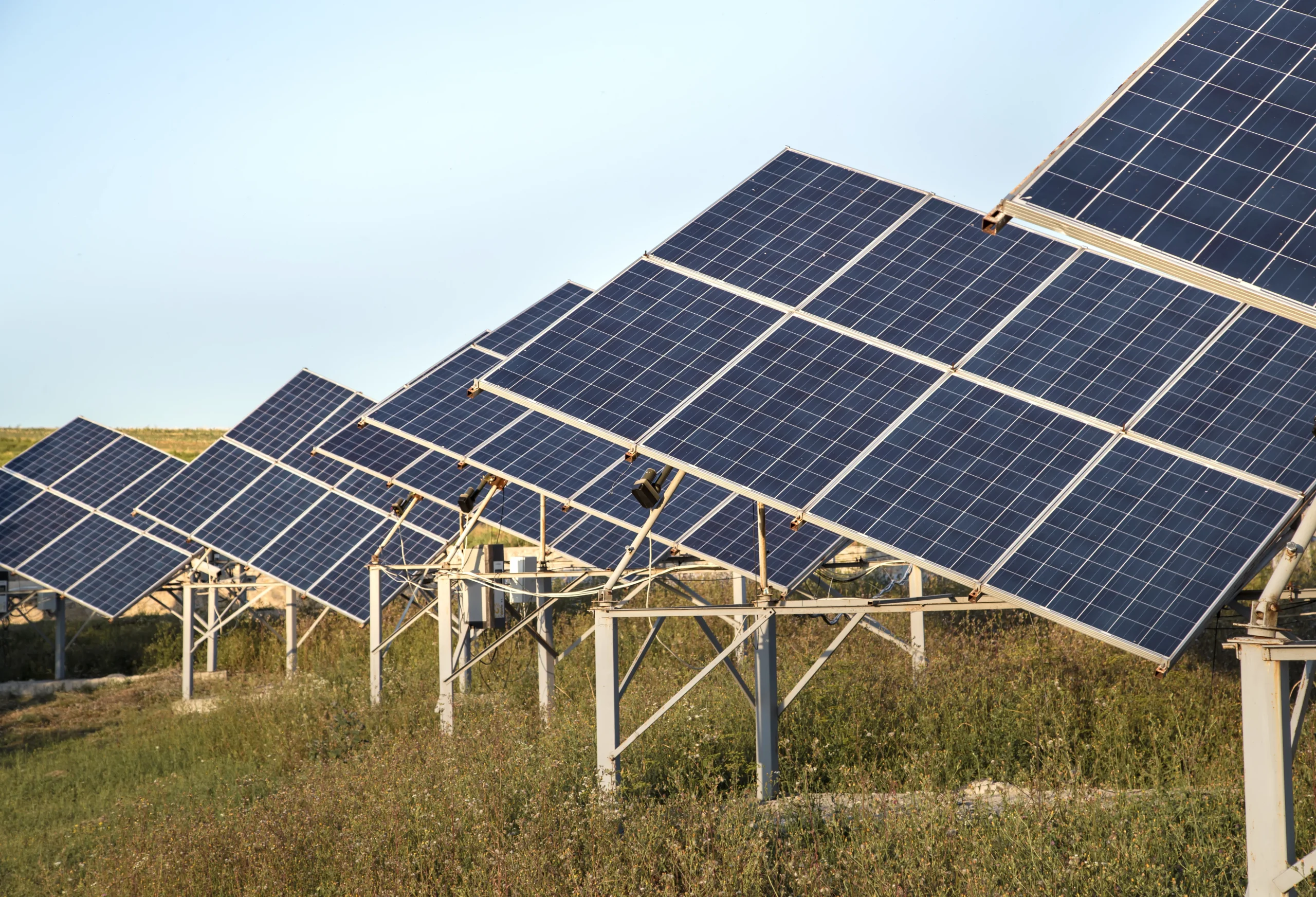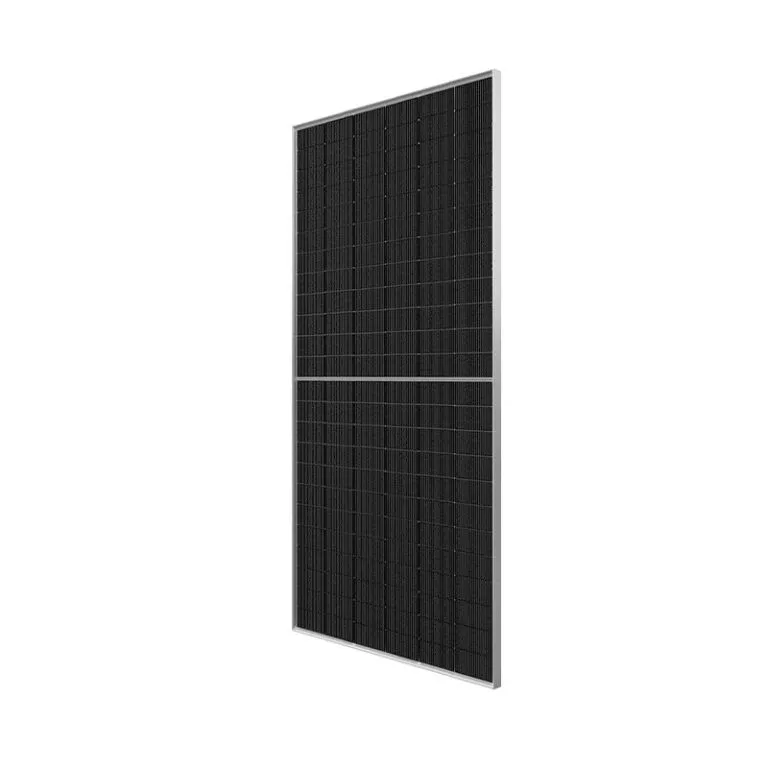စတိုးဆိုင်တွေ (သို့) စက်ရုံတွေအတွက် နေရောင်ခြည်ကို ကြီးမားတဲ့ အစီအစဉ်တွေကို ရွေးချယ်တဲ့အခါ ပါနယ်တွေကို ဘယ်လ ကြိုးစနစ်က စနစ်က ဘယ်လောက် ကောင်းမွန်စွာ အလုပ်လုပ်လဲ၊ ဘယ်လောက် စွမ်းအင်ထုတ်လုပ်လဲ၊ ဘယ်လောက် ကြာ ကုမ္ပဏီများအတွက် WonVolt ကိုနေရောင်ခြည် နည်းပညာသစ်တွေကို ကမ်းလှမ်းတဲ့ သူတွေက ကြိုးစက်နည်းလမ်းတွေရဲ့ အသေးစိတ်အချက်အလက်တွေကို သိခြင်းဟာ စ
ဤလမ်းညွှန်တွင် ကျွန်ုပ်တို့သည် သာမန်အကြောင်း ပြောဆိုပါမည် နေရောင်ခြည် panel ကြိုးစက်နည်းလမ်းများ - စီးရီး၊ ပြိုင်ဘက်နှင့် ရောစပ်ခြင်း။

နေရောင်ခြည် Panel ကြိုးစက်နည်းလမ်းများကိုနားလည်ခြင်း
ကျွန်တော်တို့ဟာ သီးခြားတဲ့ ကြိုးစနစ်တွေကို မစဉ်းစားခင်မှာ နေရောင်ခြည်ပြားစနစ်တွေရဲ့ နောက်ကွယ်က အခြေခ ကြိုးလမ်းသည် နေရောင်ခြည်စွမ်းအင်ပြားများသည် ဤစွမ်းအင်ကို မည်သို့ပို့မည်ဆိုတာတွင် ကြီးမားသောအခန်းကဏ္ဍကိုကစားသည်။ ဒါကြောင
စီးရီး ဝိုင်ဘာလဲ။
အလုပ်လုပ်ပုံ
စီးရီးကြိုးတပ်ဆင်မှုတစ်ခုမှာ နေရောင်ခြည်ပြားတွေဟာ အဆုံးကနေ အဆုံးကို ဆက်သွယ်ပါတယ်။ တစ်ခုရဲ့ အပြုသဘော အဆုံးဟာ နောက်တစ်ခုရဲ့ အပျက်သဘော အဆုံးနဲ့ ချိတ်ဆက်ပါတယ်။ ဒီပုံစံက စနစ်ရဲ့ ဗို့အားကို မြှင့်တင်ပေးတယ်။ ဒါပေမဲ့ လက်ရှိကို တူညီထားတယ်။
အကျိုးကျေးဇူးများနှင့် အားနည်းချက်များ
နေရောင်ခြည်စွမ်းကနေ အင်ဗာတာအထိ အကွာအဝေးရှည်ကို ဖုံးလွှမ်းဖို့ လိုအပ်တဲ့အခါ စီးရီး ကြိုးကို မကြာခ ဒါဟာ WonVolt ရဲ့ ဗို့အားကို လုပ်ဖို့ အလွန်ကောင်းပါတယ်။ နေရောင်ခြည် Inverter လိုအပ်ပါတယ်။ ဒါပေမဲ့ ပြားတစ်ခုက အရိပ်ရှိရင် ဒါမှမဟုတ် ချိုးယွင်းရင် စနစ်တစ်ခုလုံးရဲ့ ထုတ်လုပ်မှုဟာ ကျဆင်း ဒါဟာ စတိုးဆိုင်တွေနဲ့ စက်ရုံတွေမှာ အတည်ငြိမ် အလုပ်လိုအပ်တဲ့ အရေးကြီးတဲ့ အရာပါ။
အကောင်းဆုံး Applications များ
စီးရီး ကြိုးတွေဟာ ပြားတွေဟာ တည်ငြိမ်တဲ့ နေရောင်ခြည်ရှိတဲ့ အစီအစဉ်တွေအတွက် အကောင်းဆုံးပါ။ ပြီးတော့ ပြားနဲ့ အင်ဗာတာတွေကြားက အကွာအဝေးဟာ ရှည်ပါတယ်။ ဒါက အသေးစားကနေ အလတ်စား အစီအစဉ်တွေအတွက် လက်တွေ့ကျတဲ့ ရွေးချယ်မှုပါ။ ဒါပေမဲ့ ပိုကြီးတဲ့ ကြိုးတွေမှာ အခြားကြိုးတွေဟာ ပိုကောင်းတယ်။
Parallel Wiring ဆိုတာဘာလဲ။
အလုပ်လုပ်ပုံ
ပြိုင်ဘက် ချိတ်ဆက်မှုမှာ ပြားတွေရဲ့ အပြုသဘော အဆုံးတွေအားလုံးဟာ အတူတူ ချိတ်ဆက်ပါတယ်။ အပျက်သဘော အဆုံးတွေလည်း ဆက်သွယ်ပါတယ်။ ဒီအစီအစဉ်က လက်ရှိ ထုတ်လုပ်မှုကို တိုးမြှင့်ပေးတယ်။ ဒါပေမဲ့ ဗို့အားကို တူညီစေတယ်။
အကျိုးကျေးဇူးများနှင့် အားနည်းချက်များ
ကြီးမားတဲ့ စတိုးနဲ့ စက်ရုံ နေရောင်ခြည်စနစ်တွေအတွက် ပြိုင်ဘက်ကြိုးတွေကို နှစ်သက်ပါတယ်။ တည်ငြိမ်တဲ့ စွမ်းအင်ထုတ်လုပ်မှုဟာ အဓိက ရည်မှန်းချက်ပါ။ Panel တစ်ခုက အရိပ် သို့မဟုတ် ပျက်စီးမှုရှိရင် ကျန်တဲ့ စနစ်ဟာ အပြည့်အဝ အလုပ်လုပ်နေပါတယ်။ ဒါပေမဲ့ ပိုကြီးတဲ့ လျှပ်စစ်ကို ကိုင်တွယ်ဖို့ ပိုထူတဲ့ ကြိုးတွေ လိုပါတယ်။ ဒါက တည်ဆောက်မှု ကုန်ကျစရိတ်တွေကို မြှင့်တင်နိုင်ပါတယ်။
အကောင်းဆုံး Applications များ
ဒီကြိုးကြိုးနည်းလမ်းဟာ အပိုင်းအရိပ်ရှိတဲ့ နေရာတွေမှာ စနစ်တွေအတွက် ကောင်းပါတယ်။ ဒါမှမဟုတ် panel စောင့်ရှောက်မှုနဲ့ ယုံကြည်မှုဟာ အဓိကပါ။ ၎င်းဟာ စွမ်းအင်အသုံးပြုမှုမြင့်မားတဲ့ စက်ရုံကြီးတွေရဲ့ နေရောင်ခြည်စီမံကိန်းတွေအတွက်လည်း ထ
စီးရီးနှင့် ပြိုင်ဘက်ကြိုးများကို ပေါင်းစပ်ခြင်း
တစ်ခါတစ်ရံတွင် အကောင်းဆုံး ရွေးချယ်မှုက စီးရီးနှင့် ပြိုင်ဘက် ကြိုးနှစ်ခုစလုံးရဲ့ ကောင်းမွန်တဲ့ ဘက်ကို ယူတဲ့ ရောစပ်ထား ဗို့အားကို မြှင့်တင်ဖို့ ပြားများစွာကို စီးရီးဖြင့် ကြိုးဆက်ပေးခြင်းပါ။ အဲဒီနောက်မှာ ဒီစီးရီးတွေကို ပြိုင်ပြီး ချိတ်ဆက်ပြီး လျှပ်စစ်ကို တိုးမြှင့်ပေးပါတယ်။
အလုပ်လုပ်ပုံ
ဒီအစီအစဉ်မှာ နေရောင်ခြည်ပြားတွေကို ကြိုးသေးငယ်တွေအဖြစ် အုပ်စုပေးတယ်။ ကြိုးတစ်ခုစီဟာ စီးရီးတစ်ခုဖြစ်တယ်။ အဲဒီနောက် ကြိုးတွေကို ပြိုင်ဘက်မှာ ချိတ်ဆက်ပါ။ ရောစပ်ထားတဲ့ နည်းလမ်းက ဗို့အားနဲ့ လျှပ်စစ်ကို ချိန်ညှိစေပါတယ်။ စနစ်တစ်ခုလုံးရဲ့ အလုပ်ကို တိုးတက်စေတယ်။
အကျိုးကျေးဇူးများနှင့် အားနည်းချက်များ
ရောစပ်ထားတဲ့ ကြိုးတွေဟာ ကွေးတဲ့ ရွေးချယ်စရာတွေကို ပေးတယ်။ WonVolt ရဲ့ စွမ်းဆောင်ရည်မြင့် အင်ဗာတာတွေဟာ ဗို့အားနဲ့ လက်ရှိ လိုအပ်ချက်တွေကို ကောင်းမွန်စွာ ကိုင် ဒီအစီအစဉ်ဟာ ပိုခက်ခဲနိုင်ပါတယ်။ အစမှာ ပိုကုန်ကျနိုင်ပါတယ်။ ဒါပေမဲ့ ကြီးမားတဲ့ စက်ရုံ နေရောင်ခြည်အုပ်စုတွေအတွက် အလွန်ကူညီပါတယ်။
အကောင်းဆုံး Applications များ
ဒီနည်းလမ်းက ဗို့အားမြင့်နဲ့ လျှပ်စစ်မြင့် နှစ်ခုစလုံးလိုအပ်တဲ့ စက်ရုံကြီးတွေအတွက် အကောင်းဆုံးပါ။ စနစ်ကြီးထွားဖို့ လိုအပ်တဲ့အခါမှာလည်း ကောင်းမွန်စွာ အလုပ်လုပ်တယ်။ ပြီးတော့ အနာဂတ် ဖြည့်စွက်မှုတွေအတွက် ကွေးပါ။

စီးပွားရေးနှင့် စက်မှုလုပ်ငန်း နေရောင်ခြည်စနစ်များအတွက် အဓိက စဉ်းစားချက်များ
WonVolt နေရောင်ခြည်စနစ်အတွက် အကောင်းဆုံး ကြိုးကြိုးနည်းလမ်းကို ရွေးချယ်စဉ်တွင် အရာများစွာကို စဉ်းစ ဒါက စနစ်ဟာ အကောင်းဆုံး အလုပ်လုပ်ပေးတယ်။
ဗို့အားနှင့် လက်ရှိလိုအပ်ချက်များ
WonVolt အင်ဗာတာ အမျိုးမျိုးမှာ ဗို့အားနဲ့ လက်ရှိ လိုအပ်ချက်တွေရှိတယ်။ ဒါတွေဟာ သင်ရွေးချယ်တဲ့ ကြိုးတွေကို သက်ရောက်တယ်။ ဥပမာ၊ WonVolt ရဲ့ စတိုင်း အင်ဗာတာတွေဟာ မြင့်မားတဲ့ လျှပ်စစ်နဲ့ ဗို့အားတွေကို ကိုင်တွယ်ဖို့ လုပ်ထားတယ်။ ဒီတော့ ပြိုင်ဘက်နဲ့ ရောစပ်တဲ့ ကြိုးတွေဟာ အများဆုံး ထုတ်လုပ်မှုရဖို့ ကောင်းပါတယ်။
စွမ်းအင်ဆုံးရှုံးမှုကို ရပ်တန့်ဖို့ ဗို့အားကို မြင့်မားဖို့ လိုအပ်တဲ့ အဝေးရှည် အစီအစဉ်တွေအတွက် စီးရီးကြိုးတွေဟာ ဒါပေမဲ့ မြင့်မားတဲ့ လျှပ်စစ် လိုအပ်ချက်တွေရှိတဲ့ စနစ်တွေအတွက် ပြိုင်ဘက် ကြိုးတွေ (သို့) ရောစပ်တဲ့ နည်းလမ်း
အရိပ်နှင့် Panel Orientation
အရိပ်ဟာ နေရောင်ခြည်စနစ်ရဲ့ ထုတ်လုပ်မှုကို လျှော့ချနိုင်ပါတယ်။ စီးရီး setup များတွင်, တစ်ခုတည်း panel ပေါ်တွင်အပိုင်းအပိုင်းအရိပ်တောင်မှ string ၏အလုပ်တစ်ခုလုံးကိုလျှော့ချနိုင်သည်။ WonVolt ၏နေရောင်ခြည်အင်ဗာတာများ ဒါပေမဲ့ ပြိုင်ဘက် ကြိုးတွေ (သို့) ရောစပ်တဲ့ နည်းလမ်းက အရိပ်ရှိတဲ့ နေရာတွေမှာ ပိုကောင်းတဲ့ အလုပ်ကို ပေး အရိပ်ရှိတဲ့ ပြားတွေရဲ့ သက်ရောက်မှုကို သေးငယ်စေတယ်။
စနစ်အရွယ်အစားနှင့် Scalability
နောက်ထပ် အရေးကြီးတာက နေရောင်ခြည်စနစ်ရဲ့ အရွယ်အစားနဲ့ တိုးတက်မှုပါ။ သင်’ အနာဂတ်အတွက်ပြန်လည်စီမံကိန်းစနစ်၏အလုပ်ကိုထိခိုက်စေခြင်းမရှိဘဲ panel များကိုထည့်သွင်းရန်ရောစပ်ကြိုးများကိုပေးသည်။ WonVolt နေရ ၎င်းတို့က စွမ်းအင်ထုတ်လုပ်မှုကို တိုးမြှင့်ပေးပါတယ်။
Panel နည်းပါးတဲ့ သေးငယ်တဲ့ စနစ်တွေအတွက် စီးရီးကြိုးတွေဟာ ပိုစျေးပေါတဲ့ ရွေးချယ်မှုတစ်ခုဖြစ်နိုင်တယ်။ ၎င်းဟာ ကြိုးတွေ လျော့နည်းပါတယ်။ ဒါကို တည်ဆောက်ဖို့ ပိုလွယ်ကူပါတယ်။ ဒါပေမဲ့ ပိုကြီးမားတဲ့ စီးပွားရေး စနစ်တွေဟာ ပြိုင်ဘက် (သို့) ရောစပ်တဲ့ အစီအစဉ်တွေက ပေးတဲ့ ယုံကြည်မှုန
ကုန်သွယ်ရေးနှင့် စက်မှုဆိုင်ရာ နေရောင်ခြည်စွမ်းအင်ပြားများအတွက် အကောင်းဆုံးအလေ့အကျင့်
WonVolt နေရောင်ခြည်စနစ်ကို ဒီဇိုင်းထုတ်ပြီး တည်ဆောက်တဲ့အခါ ထိပ်တန်းအလုပ်နဲ့ သက်တမ်းရှည်ကို သေချာ
စီမံကိန်းနှင့် ဒီဇိုင်း
ကောင်းမွန်တဲ့ စီမံကိန်းခြင်းဟာ မှန်ကန်တဲ့ ကြိုးလမ်းကို ရွေးချယ်ဖို့ အဓိကပါ။ စွမ်းအင်လိုအပ်ချက်တွေကို စစ်ဆေးဖို့လိုပါတယ်။ နေရာကန့်သတ်ချက်တွေပါ။ အရိပ်ပြဿနာတွေပါ။ အကောင်းဆုံး အစီအစဉ်ကို ရှာဖို့ပါ။ WonVolt ရဲ့ ကျွမ်းကျင်သူအဖွဲ့က ကူညီနိုင်ပါတယ်။ စနစ်ဒီဇိုင်းသူတို့ဟာ ဝိုင်ကြိုးလမ်းက သင့်ရဲ့ စွမ်းအင် ရည်မှန်းချက်တွေနဲ့ ကိုက်ညီတယ်ဆိုတာ သေချာပါတယ်။
Installation အကြံပေးချက်များ
စီးရီး ကြိုးများ: ပိုမြင့်မားသော ဗို့အားလိုအပ်သော ပိုတိုသော ကြိုးများအတွက် အသုံးပြုပါ။ အရိပ်နည်းတဲ့ နေရာတွေမှာ WonVolt ရဲ့ အင်ဗာတာတွေအတွက် ကောင်းပါတယ်။
Parallel Wireing: အရိပ် သို့မဟုတ် အပိုင်းပိုင်း ကွဲပွားနိုင်သော နေရာများတွင် အသုံးပြုပါ။ ၎င်းဟာ စနစ်ကို အပြည့်အဝ အလုပ်လုပ်နိုင်စေပါတယ်၊ ပြားတစ်ခုက မကောင်းပေမဲ့ ပါ။
Hybrid Wireing: ကြီးမားတဲ့ စတိုးစနစ်တွေအတွက် ကောင်းပါတယ်။ ၎င်းဟာ အမြင့်ဆုံး အလုပ်နဲ့ ကွေးတဲ့ နည်းလမ်းတွေအတွက် စီးရီးနဲ့ ပြိုင်ဘက် စီစဉ်တွေရဲ့ အကျိုးကျေးဇူး
ထိန်းသိမ်းမှုနှင့် ပြဿနာဖြေရှင်းခြင်း
WonVolt နေရောင်ခြည်အုပ်စု၏ အလုပ်ကို မြင့်မားစေရန် ပုံမှန် စနစ်စစ်ဆေးမှုများ လိုအပ်သည်။ ပျက်စီးမှုအတွက် ပြားများကို ကြည့်ပါ။ ကြိုးချိတ်ဆက်မှုတွေဟာ တင်းကျပ်တာ သေချာပါ။ ညစ်ညစ်မှုတွေ တည်ဆောက်မှုကို ရပ်တန့်ဖို့ ပြားတွေကို သန့်ရှင်းပါ။ ပိုကြီးတဲ့ စနစ်တွေအတွက် အချိန်ချင်းချင်း ပညာရှင် စောင့်ရှောက်မှုကို ရပါ။ အလုပ်ကို မထိခိုက်ခင် ပြဿနာတွေကို ဖြေရှင်းပါတယ်။
FAQ များ
Q1. စီးပွားရေးနေရောင်ခြည်စနစ်များတွင် hybrid ကြိုးများ၏အကျိုးကျေးဇူးကိုဘာလဲ?
ဖြေ: ဟိုင်ဘရစ်ကြိုးသည် စီးရီးကြိုးများ၏ ဗို့အားအကျိုးကျေးဇူးများကို ပြိုင်ဘက်ကြိုးများ၏ လက်ရှိအကျိုးကျေးဇူးများနှင့် ပေါင်းစပ်ခြင်းဖြင့် နှစ်ခုစလုံးအတွက် အကောင်းဆုံးက
Q2 ကျွန်ုပ်၏ WonVolt နေရောင်ခြည်စနစ်အတွက် စီးရီးနှင့် ပြိုင်ဘက်ကြိုးများအကြား ဘယ်လိုရွေးချယ်ရမလဲ
ဖြေ: ရွေးချယ်မှုဟာ သင့်ရဲ့ တိကျတဲ့ လိုအပ်ချက်တွေပေါ် မူတည်ပါတယ်။ အကွာအဝေးထုတ်လွှင့်မှုအတွက် ဗို့အားကို မြှင့်တင်ရန် လိုအပ်ရင် စီးရီးကြိုးတွေဟာ ပိုကောင်းတဲ့ ရွေးချယ် ပိုမြင့်မားသော လက်ရှိလိုအပ်ချက်များ သို့မဟုတ် အရိပ်ရှိနိုင်ခြေရှိသော စနစ်များအတွက် ပြိုင်ဘက်ကြိုးများ သို့မဟုတ် ဟ
Q3. အနာဂတ်တွင် ကျွန်ုပ်၏ WonVolt နေရောင်ခြည်စနစ်ကို ဟိုင်ဘရစ်ကြိုးများဖြင့် တိုးချဲ့နိုင်သလား။
ဖြေ: ဟုတ်ကဲ့၊ ဟိုက်ဘရစ်ကြိုးတွေဟာ တိုးချဲ့နိုင်တဲ့ စနစ်တွေအတွက် အထူးသဖြင့် ကောင်းမွန်ပါတယ်။ သင့်ရဲ့ စွမ်းအင်လိုအပ်ချက်တွေ တိုးလာတာနဲ့ စနစ်ရဲ့ စွမ်းဆောင်ရည်ကို အန္တရာယ်မပြုဘဲ လက်ရှိပြီး တည်ဆောက်ထားတဲ့ အဆောက်အအ

